Audiogenic Seizures and Social Deficits: No Aggravation Found in Krushinsky-Molodkina Rats
- PMID: 37761007
- PMCID: PMC10526393
- DOI: 10.3390/biomedicines11092566
Audiogenic Seizures and Social Deficits: No Aggravation Found in Krushinsky-Molodkina Rats
Abstract
Epilepsy or epileptic syndromes affect more than 70 million people, often comorbid with autism spectrum disorders (ASD). Seizures are concerned as a factor for social regression in ASD. A stepwise experimental approach to this problem requires an animal model to provoke seizures and monitor subsequent behavior. We used rats of the Krushinsky-Molodkina (KM) strain as a validated inbred genetic model for human temporal lobe epilepsy, with recently described social deficiency and hypolocomotion. Generalized tonic-clonic seizures in KM rats are sound-triggered, thus being controlled events in drug-naïve animals. We studied whether seizure experience would aggravate contact deficits in these animals. Locomotor and contact parameters were registered in "the elevated plus maze", "socially enriched open field", and "social novelty/social preference tests" before and after sound-provoked seizures. The triple seizure provocations minimally affected the contact behavior. The lack of social drive in KM rats was not accompanied by a submissive phenotype, as tested in "the tube dominance test", but featured with a poor contact repertoire. Here, we confirmed our previous findings on social deficits in KM rats. The contact deficiency was dissociated from hypolocomotion and anxiety and did not correlate with seizure experience. It was established that experience of rare, generalized tonic-clonic convulsions did not lead to an impending regress in contact motivation, as seen in an animal model of genetic epilepsy and comorbid social deficiency. One of the oldest animal models for epilepsy has a translational potential to study mechanisms of social behavioral deficits in future neurophysiological and pharmacological research.
Keywords: KM rats; Wistar rats; animal models; anxiety; autism spectrum disorder; autistic disorder; epilepsy; motivation; phenotype; seizures.
Conflict of interest statement
The authors declare no conflict of interest.
Figures


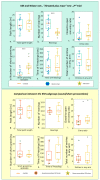

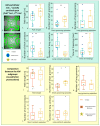
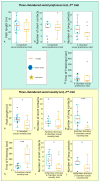
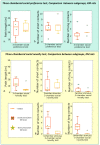
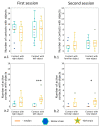
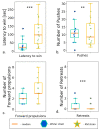
Similar articles
-
Social Behavioral Deficits in Krushinsky-Molodkina Rats, an Animal Model of Audiogenic Epilepsy.J Pers Med. 2022 Dec 14;12(12):2062. doi: 10.3390/jpm12122062. J Pers Med. 2022. PMID: 36556281 Free PMC article.
-
Study of Uridine Effect on the Development of Audiogenic Tonic Seizures in Krushinsky-Molodkina Strain Rats.Dokl Biol Sci. 2018 Jul;481(1):125-127. doi: 10.1134/S0012496618040014. Epub 2018 Aug 31. Dokl Biol Sci. 2018. PMID: 30171462
-
Neuroinflammation in Pathogenesis of Audiogenic Epilepsy: Altered Proinflammatory Cytokine Levels in the Rats of Krushinsky-Molodkina Seizure-Prone Strain.Biochemistry (Mosc). 2023 Apr;88(4):481-490. doi: 10.1134/S0006297923040041. Biochemistry (Mosc). 2023. PMID: 37080934
-
The Krushinsky-Molodkina rat strain: The study of audiogenic epilepsy for 65years.Epilepsy Behav. 2017 Jun;71(Pt B):130-141. doi: 10.1016/j.yebeh.2015.04.072. Epub 2015 Jul 28. Epilepsy Behav. 2017. PMID: 26228091 Review.
-
[Rats of Krushinsky-Molodkina strain: studies of audiogenic epilepsy, vascular pathology, and behavior].Zh Vyssh Nerv Deiat Im I P Pavlova. 2006 May-Jun;56(3):298-316. Zh Vyssh Nerv Deiat Im I P Pavlova. 2006. PMID: 16869263 Review. Russian.
Cited by
-
Novel automated method to assess group dynamics reveals deficits in behavioral contagion in rats with social deficits.Front Behav Neurosci. 2024 Dec 18;18:1519486. doi: 10.3389/fnbeh.2024.1519486. eCollection 2024. Front Behav Neurosci. 2024. PMID: 39744143 Free PMC article.
-
Preclinical Evidence for the Role of the Yin/Yang Angiotensin System Components in Autism Spectrum Disorder: A Therapeutic Target of Astaxanthin.Biomedicines. 2023 Nov 27;11(12):3156. doi: 10.3390/biomedicines11123156. Biomedicines. 2023. PMID: 38137376 Free PMC article.
-
Temporal action localisation in video data containing rabbit behavioural patterns.Sci Rep. 2025 Feb 17;15(1):5710. doi: 10.1038/s41598-025-89687-6. Sci Rep. 2025. PMID: 39962237 Free PMC article.
-
Ultrasound Communications Reveal Social Aversion in Rats With Contact Motivation Deficits but not Anhedonia.Alpha Psychiatry. 2025 Jun 18;26(3):43990. doi: 10.31083/AP43990. eCollection 2025 Jun. Alpha Psychiatry. 2025. PMID: 40630876 Free PMC article.
References
Grants and funding
LinkOut - more resources
Full Text Sources

